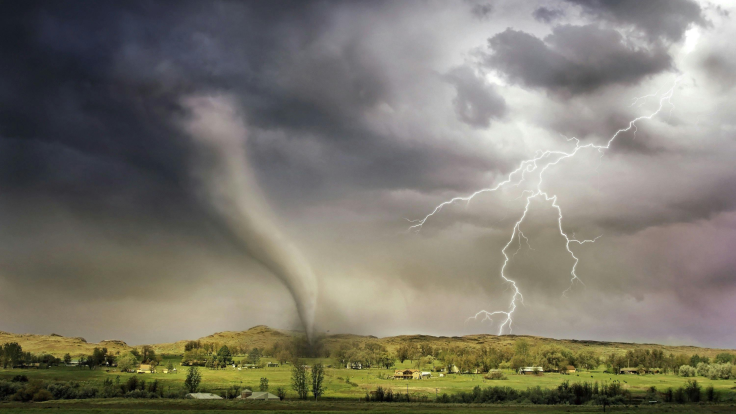Enderlin Tornado Hits EF-5 Strength: What Made This Storm So Rare and Devastating?
How the Enderlin tornado's destruction confirmed its place among America's most violent twisters
The deadliest category of tornado has reappeared in the United States after more than a decade, as the Enderlin tornado has officially been upgraded to EF-5 status, the highest possible rating on the Enhanced Fujita (EF) scale.
On 6 October 2025, the National Weather Service (NWS) confirmed that the tornado which struck near Enderlin, North Dakota, on 20 June 2025 reached EF-5 intensity, with wind speeds exceeding 210 mph. This marks the first EF-5 tornado recorded in the US since 20 May 2013, when a deadly storm tore through Moore, Oklahoma, killing 24 people.
The EF scale, used to classify tornadoes by estimated wind speed and the damage left behind, assigns EF-5 as its most extreme rating. It is rarely used—only 10 EF-5 tornadoes have ever been confirmed in the US since the NWS started using the EF scale in 2007.
What Is an EF-5 Tornado?
The EF scale ranks tornadoes from EF0 to EF5 based on the damage they cause and estimated wind speeds. An EF0 tornado has winds between 65–85 mph, while EF1 ranges from 86–110 mph. EF2 covers 111–135 mph, and EF3 ranges from 136–165 mph. EF4 tornadoes reach 166–200 mph, and EF5, the most severe, involves wind speeds exceeding 200 mph.
EF5 tornadoes are rare and typically cause complete destruction. They represent the most severe wind events on Earth. Their winds can lift vehicles, destroy homes, and leave little trace of structures behind.
Train Derailments and Tree Destruction Confirm Wind Speeds
The Enderlin tornado's damage was reanalysed months after the event. A forensic investigation, conducted by wind damage specialists and meteorologists, revealed new indicators pointing to the storm's extreme strength.
The most notable evidence was found in a train derailment south of Enderlin. Several fully-loaded grain hopper cars, each weighing more than 90,000 kilograms, were tipped over and pushed off the tracks. An empty tanker car weighing roughly 32,000 kilograms was lifted and thrown nearly 145 metres.
Surveyors also documented widespread tree destruction, including entire trees torn from the ground and others stripped of bark with a sandpaper-like effect. Such signs pointed to wind speeds well beyond 200 mph, the minimum threshold for EF-5 classification. Based on this physical evidence and radar-confirmed wind patterns, the NWS formally upgraded the tornado's strength.
12 Miles of Destruction Across Rural North Dakota
The tornado formed just after 11:00 p.m. on 20 June 2025. It touched down near Enderlin and tracked northeast for 12.1 miles, eventually lifting near Alice in Cass County. At its widest point, the tornado stretched over one mile across.
Three people lost their lives, but the tornado mainly hit rural areas, limiting the overall damage. Still, the destruction was significant. One farmstead along Highway 46 was completely destroyed, with its home swept clean off the foundation. However, the lack of proper anchoring prevented the NWS from using that site alone as EF-5 proof.
Instead, investigators based their conclusion on a combination of the large-scale damage, the force required to move such heavy train cars, and the extensive tree destruction. All were consistent with the highest tier of tornado strength.
Why This Tornado Was So Rare
The Enderlin tornado is the first EF-5 in North Dakota since 1957 and ends a 12-year national drought of EF-5 classifications. Despite hundreds of tornadoes forming each year in the US, few reach EF-5 status. This is due in part to how tornadoes are measured.
Tornado strength is not judged by instruments but by the damage left behind. If a tornado moves through open land or avoids strongly built structures, it can be rated lower than its actual wind speed would suggest. Scientists have expressed concern that the EF scale may sometimes underestimate tornadoes due to limited damage indicators.
In this case, the movement of fully loaded freight cars and severe tree scarring provided the level of damage necessary for an EF-5 classification. The Enderlin EF-5 has not only broken a 12-year record, but also added to the limited list of tornadoes with confirmed catastrophic wind speeds. This storm's late-night impact, heavy damage, and unique forensic evidence have secured its place in American weather history.
© Copyright IBTimes 2025. All rights reserved.





















